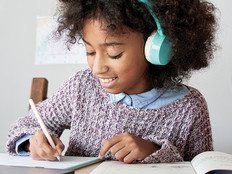Why Our School Is Going Beyond Printed Newsletters
Like many schools across the country, my school uses printed newsletters to share student learning with families on a weekly basis.
Parents have responded positively to these communications for years, but are we reaching everyone? Probably not. Social media has already proved to be a powerful tool for communication and collaboration, and there is evidence to support its use in the K-12 environment.
Meg Carnes and Kitty Porterfield make a strong case for connecting online with families in their book Why Social Media Matters: School Communication in the Digital Age. They cite data from the Pew Research Center that 75 percent of adults ages 29 and younger use social media. The most recent data from Pew found that 83 percent of adults 18–29 use social media.
The trend is obvious: The overwhelming majority of young parents will be social media users within a few years.
That’s why I believe print communications must be augmented with a digital presence.
Here are three examples of how schools can use Web 2.0 to connect with more families. (Note: All three of these tools can be linked or embedded into your classroom web page within your district.)
Instead of Using Just a Print Newsletter, Consider Blogs
My school has a number of different blogs up and running. For example, I post a variety of information on our school blog, such as details about an upcoming reading program or rules about the sledding hill.
Some teachers in our school also run classroom blogs, sharing that week’s learning without creating a separate newsletter after school. The teacher is also modeling this type of writing for his or her students.
Another benefit of a school blog is any family member regardless of location can see the learning happening in that child's classroom, as long as they have an Internet connection and the URL.
If teachers still want to create print newsletters, they can simply copy and paste the text from the newsletter into a blog post for both digital and print distribution. Encourage parents to post comments on the blog for positive and constructive feedback for the students.
Instead of Just a Classroom Web Page, Consider Facebook
Some teachers have experimented with using Facebook Pages to better connect with families. They’ve created a professional profile separate from their personal account (if they have one) to manage it; the page is private for student safety.
Parents have to "like" the page and then be granted permission by the teacher to have access. Once on the page, parents can view activities documented from the classroom. The teacher can upload pictures of students doing a poetry reading or a video of a special event such as a science fair.
This is especially nice for parents who are unable to attend these events due to work conflicts. Another benefit is the facilitation of two-way communication. A parent can post a question or comment and get a quick response from the teacher. Many parents now use Facebook, so I can see the benefits of using this social media tool.
Instead of Just Emails or Robocalls, Consider Twitter
Twitter is fast, visually appealing and allows for several different types of media to be shared in a matter of seconds. Also, this communication can take place during class.
For instance, a teacher can tweet a summary of what was learned in math along with an image of exemplary work. Condensing a group's understanding down to 140 characters is also a great way to model summarization, as well as to check for students' understanding. Embed your classroom's feed on your web page for parents who do not want to join the "Twitterverse." We have done this for our school's Twitter account, and it looks great on our home page.
Educators can take it a step further with Storify. This tool allows the user to drag specific tweets into a timeline. Short descriptions can be added between images to provide more information for each tweet. The "storified" tweets can then be shared via email or, better yet, posted on a blog.
Differentiating the Delivery of Information
My wife and I do our best to prepare a nice dinner for our young family. However, no matter what we make, our kids don't always love our offerings. We have learned to anticipate these conflicts by separating out the ingredients instead of mixing them together as the recipe prescribes. But we refuse to make a different dinner for them. They receive the same meal, just in a different form.
The information we share with parents is the same; we just have different delivery methods. Communicating both digitally and in print ensures that we are reaching more of our audience.








